Nationality American Parents Wynne Lee Viola Spouse Kira Perov (m. 1978) | Role Video Artist Name Bill Viola | |
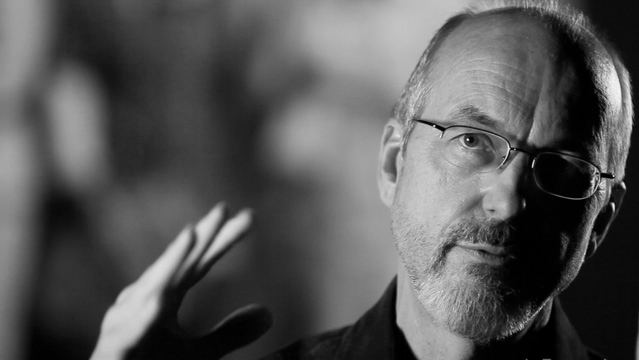 | ||
Known for Video artElectronic ArtNew Media Art Notable work Reasons for Knocking at an Empty House (1982) Movies Bill Viola: The Eye of the Heart, Bill Viola: The Passing Books The Art of Bill Viola, Bill Viola: Frustrated Actions and Futile Gestures, Bill Viola, a Daybook, Bill Viola: The City of Man Awards MacArthur Fellowship, Guggenheim Fellowship for Creative Arts, US & Canada Similar People Nam June Paik, Bruce Nauman, Andy Warhol, Marcel Duchamp, Joseph Beuys | ||
Bill viola emergence
Bill Viola (born 1951) is a contemporary video artist whose artistic expression depends upon electronic, sound, and image technology in New Media. His works focus on the ideas behind fundamental human experiences such as birth, death and aspects of consciousness.
Contents
- Bill viola emergence
- Bill viola best video
- Early life and education
- Career
- Bill Viola Studio
- Style
- Video art projects
- Reverse Television
- The Quintet Series
- An Ocean Without a Shore
- Observance
- The Tristan Project
- The Night Journey
- Bodies of Light
- Other projects
- Awards
- Violas Three Structures
- Solo exhibitions
- References
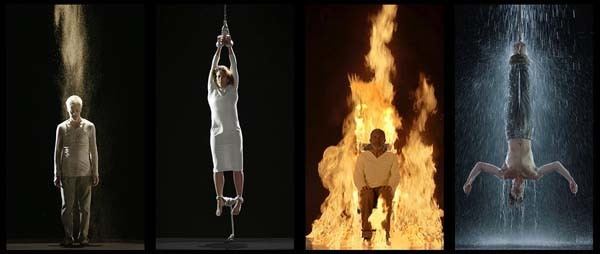
Bill viola best video
Early life and education

Viola grew up in Queens, New York, and Westbury, New York. He attended P.S. 20, in Flushing, where he was captain of the TV Squad. On vacation in the mountains with his family, he nearly drowned in a lake, an experience he describes as “… the most beautiful world I’ve ever seen in my life” and “without fear,” and “peaceful.”
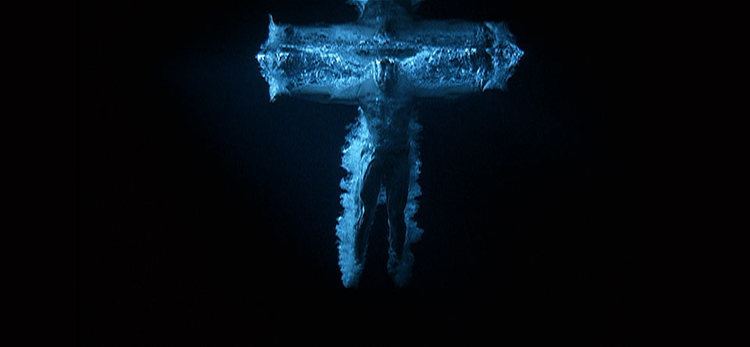
In 1973, Viola graduated from Syracuse University with a Bachelor in Fine Arts. He studied in the Experimental Studios of the College of Visual and Performing Arts, including the Synapse experimental program, which evolved into CitrusTV.
Career
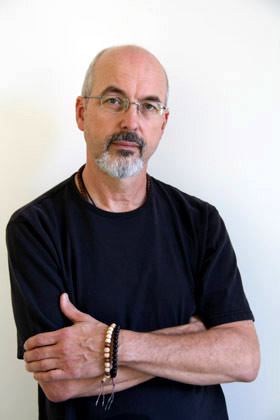
Viola's first job after graduation was as a video technician at the Everson Museum of Art in Syracuse. From 1973 to 1980, he studied and performed with composer David Tudor in the new music group "Rainforest" (later named "Composers Inside Electronics"). From 1974 to 1976, Viola worked as technical director at Art/tapes/22, a pioneering video studio led by Maria Gloria Conti Bicocchi, in Florence, Italy where he encountered video artists Nam June Paik, Bruce Nauman, and Vito Acconci. From 1976 to 1983, he was artist-in-residence at WNET Thirteen Television Laboratory in New York. In 1976 and 1977, he traveled to the Solomon Islands, Java, and Indonesia to record traditional performing arts.
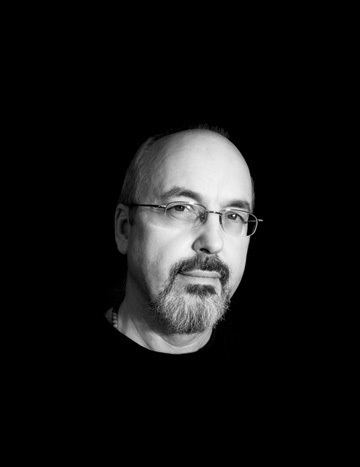
Viola was invited to show work at La Trobe University (Melbourne, Australia) in 1977, by cultural arts director Kira Perov. Viola and Perov later married, beginning an important lifelong collaboration in working and traveling together. In 1980, they lived in Japan for a year and a half on a Japan/U.S. cultural exchange fellowship where they studied Buddhism with Zen Master Daien Tanaka. During this time, Viola was also an artist-in-residence at Sony Corporation's Atsugi Laboratories.

In 1983, he became an instructor in Advanced Video at the California Institute of the Arts, in Valencia, California. He represented the United States at the 46th Venice Biennale in 1995 for which he produced a series of works called Buried Secrets, including one of his best known works The Greeting, a contemporary interpretation of Pontormo's The Visitation. In 1997, the Whitney Museum of American Art organized and toured internationally a major 25-year retrospective of Viola's work.
Viola was the 1998, Getty Scholar-in-residence at the Getty Research Institute, Los Angeles . Later, in 2000, he was elected to the American Academy of Arts and Sciences. In 2002, he completed Going Forth By Day, a digital “fresco” cycle in High-Definition video, commissioned by the Deutsche Guggenheim Berlin and the Guggenheim Museum, New York.
In 2003,The Passions was exhibited in Los Angeles, London, Madrid, and Canberra. This was a major collection of Viola's emotionally charged, slow-motion works inspired by traditions within Renaissance devotional painting.
The first biography of Viola, entitled "Viola on Vídeo", was written by Federico Utrera (King Juan Carlos University) and published in Spain in 2011.
Bill Viola Studio
Bill Viola Studio is run by his wife, Kira Perov, who is the executive director. She has worked with Viola since 1978 managing and assisting Viola with his videotapes and installations. She documents their work in progress on location. All publications from the studio are edited by Perov.
Style
Viola's art deals largely with the central themes of human consciousness and experience - birth, death, love, emotion and a kind of humanist spirituality. Throughout his career he has drawn meaning and inspiration from his deep interest in mystical traditions, especially Zen Buddhism, Christian mysticism and Islamic Sufism, often evident in the transcendental quality of some of his works. Equally, the subject matter and manner of western medieval and renaissance devotional art have informed his aesthetic.
An ongoing theme that he constantly explores is dualism, or the idea that comprehension of a subject is impossible unless its opposite is known. For example, a lot of his work has themes such as life and death, light and dark, stressed and calm, or loud and quiet.
His work can be divided into three types, conceptual, visual, and a unique combination of the two. According to art critic James Gardner of the National Review, Viola's conceptual work is forgettable just like most video art. However, others have different opinions. On the other hand, Gardner feels that Viola's visual work such as "The Veiling", and his combination of both the conceptual and visual such as "The Crossing" are impressive and memorable.
Viola's work often exhibits a painterly quality, his use of ultra-slow motion video encouraging the viewer to sink into to the image and connect deeply to the meanings contained within it. This quality makes his work perhaps unusually accessible within a contemporary art context. As a consequence, his work often receives mixed reviews from critics, some of whom have noted a tendency toward grandiosity and obviousness in some of his work. Yet it is this very ambitiousness, his striving toward meaning, and attempts to deal with the big themes of human life, that also make his work so clearly appreciated by other critics, his audiences and collectors.
His early work established his fascination with issues that continue to inform his work today. In particular, Viola's obsession with capturing the essence of emotion through recording of its extreme display began at least as early as his 1976 work, The Space Between the Teeth, a video of himself screaming, and continues to this day with such works as the 45-second Silent Mountain (2001), which shows two actors in states of anguish.
If Viola's depictions of emotional states with no objective correlative — emotional states for which the viewer has no external object or event to understand them by—are one feature of many of his works, another, which has come to the forefront, is his reference to medieval and classical depictions of emotion. Most immediately, his subdued Catherine's Room 2001, has many scene by scene parallels with Andrea di Bartolo's 1393 St. Catherine of Siena Praying.
Viola's work has received critical accolades. Critic Marjorie Perloff singles him out for praise. Writing at length about the necessity of poetic works responding to and taking advantage of contemporary computer technologies, Perloff sees Viola as an example of how new technology—in his case, the video camera—can create entirely new aesthetic criteria and possibilities that did not exist in previous incarnations of the genre — in this case, theater.
Video art projects
While many video artists have been quick to adopt new technologies to their medium, Viola relies little on digital editing. Perhaps the most technically challenging part of his work—and that which has benefited most from the advances since his earliest pieces—is his use of extreme slow motion.
Reverse Television
Reverse Television 1983 is a 15-minute montage of people watching video cameras as though they were televisions.
The Quintet Series
The Quintet Series 2000 is one such piece (actually a set of four separate videos), that shows the unfolding expressions of five actors in such slow motion that every minute detail of their changing expressions can be detected. The series is a challenging one for the viewer, because the concentration required to follow the facial expressions over time must last for minutes or more. In general, the distortion of time, along with the lack of sound or voice over, form the most immediately ""new"" aspects of Viola's work for the first-time viewer.
In 2000, Bill Viola collaborated with the industrial rock band Nine Inch Nails, and its lead singer Trent Reznor to create a video suite for the band's tour. The triptych mainly is focused on water imagery and was supposed to be integral with the songs that were played.
An Ocean Without a Shore
In 2007, Viola was invited back to the 52nd Venice Biennale to present an installation called "Ocean without a Shore," which was seen by over 60,000 viewers throughout its duration. In this piece, exposed in the little but perfectly fitted Church of San Gallo, Viola is exploring life and death. The experiment consists of people standing in the foreground with nothing but black behind them. Each of them seem to produce gallons of water from themselves as if they were waterfalls. The water comes gushing out of their bodies as if they are being reborn. The very last individual is an elderly man who actually glows a supernatural green while dozens of gallons of water erupts from his body. There are 2 individuals in the middle of the piece who only seem to trickle water, while all the others produce a waterfall of water (Sal 2008). Viola says that this piece is about how the dead are undead; that once they get through the water they are conscious again.
Observance
Observance 2002, is a work which may be taken partly as a response to the September 11, 2001 Terrorist Attacks. Observance places the camera at eye level facing the head of a line of people of a wide variety of ages. As Observance unfolds, the line slowly advances, with each person pausing at the front of the line in a state of intense—though quiet—grief, before ceding their place to the next person in line.
The Tristan Project
In 2004, Viola embarked on The Tristan Project. At the invitation of opera director Peter Sellars, he created video sequences to be shown as a backdrop to the action on stage during the performance of Wagner's opera Tristan und Isolde. Using his trademark extreme slow motion, Viola's pieces used actors to portray the metaphorical story behind Wagner's story, seeing for example the first act as an extended ritual of purification in which the characters disrobe and wash themselves before finally plunging headlong into water together (in Wagner's story, the two characters maintain the facade of being indifferent to each other (necessary because Isolde is betrothed to Tristan's uncle) before, mistakenly believing they are going to die anyway, and reveal their true feelings). Viola trademarks such as fire and water are much in evidence here. The piece was first performed in Los Angeles at Disney Hall on 3 separate evenings in 2004, one act at a time, then given complete performances at the Bastille Opera in Paris in April and in November 2005. The video pieces were later shown in London without Wagner's music in June to September 2006, at the Haunch of Venison Gallery and St Olave's College, London. The Tristan project returned, both in music and video, to the Disney Hall in Los Angeles in April 2007, with further performances at New York City's Lincoln Center in May 2007 and at the Gergiev Festival in Rotterdam, The Netherlands, in September 2007. It will be seen at the Canadian Opera Company in Toronto in February 2013.
The Night Journey
In 2005, he began working with Tracy Fullerton and the Game Innovation Lab at USC on the art game, The Night Journey, a project based on the universal story of an individual's mystic journey toward enlightenment. The game has presented at a number of exhibits worldwide as a work in progress. It was awarded Sublime Experience at Indiecade 2008.
Bodies of Light
In October 2009, Viola’s solo exhibition entitled "Bodies of Light” appeared at the James Cohan Gallery in New York. Featured in the exhibition was Pneuma (1994), a projection of alternating images evoking the concept of fleeting memories. Also on view were several pieces from the Viola’s ongoing "Transfiguration" series, which he evolved from his 2007 installation Ocean Without a Shore.
Other projects
In 2004, Viola began work on a new production of Richard Wagner's opera Tristan und Isolde, a collaboration with director Peter Sellars, conductor Esa-Pekka Salonen and executive producer Kira Perov. The opera premiered at the Opéra National de Paris in 2005 and Viola's video work was subsequently shown as LOVE/DEATH The Tristan Project at the Haunch of Venison Gallery and St Olave's School, London, in 2006. During 2007, the Centro Andaluz de Arte Contemporaneo in Sevilla, organized an exhibition at the Palace of Charles V in la Alhambra- Granada- in which Viola's work dialogues with the Fine Arts Collection of the museum.
Awards
Bill Viola was awarded the XXIst Catalonia International Prize on May 11, 2009. The [Premi Internacional Catalunya was created by the autonomous government of Catalonia, the Generalitat de Catalunya, to be awarded to those who make notable contributions to the advancement of human, cultural, and scientific values. The award honors an individual "whose creative work has made a significant contribution to the development of cultural, scientific or human values anywhere in the world".
Viola's Three Structures
Viola felt as if there are 3 different structures to describe patterns of data structures. There is the branching structure, matrix structure, and schizo structure.
"The most common structure is called branching. In this structure, the viewer proceeds from the top to bottom in time." The branching structure of presenting data is the typical narrative and linear structure. The viewer proceeds from a set point A to point B by taking an exact path, the same path any other reader would take. An example of this is Google because users go into this website with a certain mindset of what they want to search for, and they get a certain result as they branch off and end at another website.
The second structure is the Matrix structure. This structure describes media when it follows nonlinear progression through information. The viewer could enter at any point, move in any direction, at any speed, pop in and out at any place. Like the branching structure, this also has its set perimeters. However, the exact path that is followed is up to the user. The user has the option of participating in decision-making that affect the viewing experience of the media. An example of this is Public Secrets [2], a website that reveals secrets of the justice and the incarceration system within the US for women. There is a set boundary of what users can and can't do while presenting them with different themes and subjects users are able to view. Different users will find themselves taking different paths, using flash cues to guide themselves through the website. This vast selection of paths presents many users with a unique viewing experience (in relation to that of the previous persons). As well, they have the choice to read the excerpts from these women or hear it out loud. This connects to Borges' "The Garden of Forking Paths" where the participant has a variety of choices on how they see a story unfold before them. Each time, they can create a different path.
The last structure is called the schizo, or the spaghetti model. This form of data structure pertains to pure or mostly randomness. "Everything is irrelevant and significant at the same time. Viewers may become lost in this structure and never find their way out."
